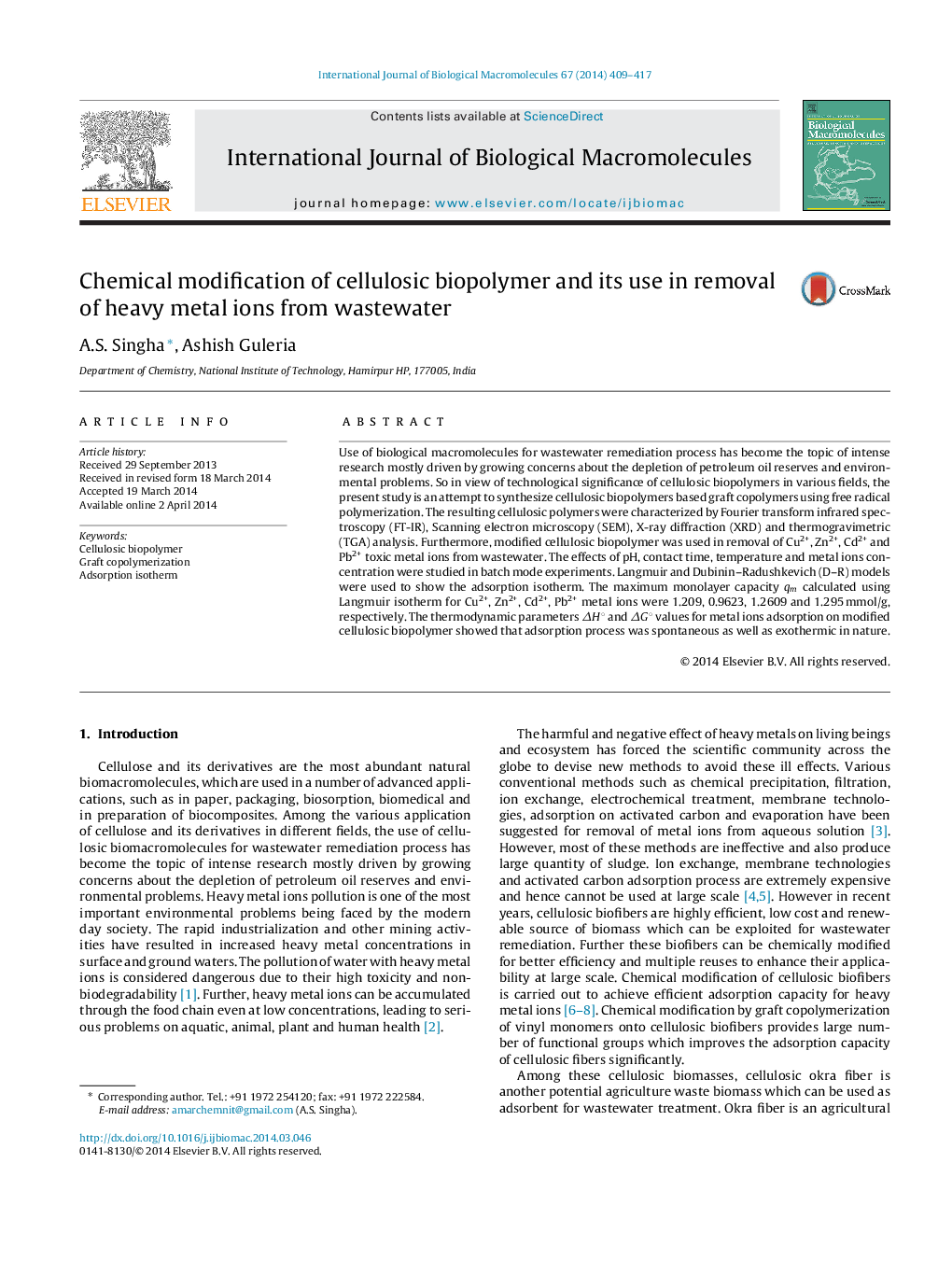| Article ID | Journal | Published Year | Pages | File Type |
|---|---|---|---|---|
| 8333188 | International Journal of Biological Macromolecules | 2014 | 9 Pages |
Abstract
Use of biological macromolecules for wastewater remediation process has become the topic of intense research mostly driven by growing concerns about the depletion of petroleum oil reserves and environmental problems. So in view of technological significance of cellulosic biopolymers in various fields, the present study is an attempt to synthesize cellulosic biopolymers based graft copolymers using free radical polymerization. The resulting cellulosic polymers were characterized by Fourier transform infrared spectroscopy (FT-IR), Scanning electron microscopy (SEM), X-ray diffraction (XRD) and thermogravimetric (TGA) analysis. Furthermore, modified cellulosic biopolymer was used in removal of Cu2+, Zn2+, Cd2+ and Pb2+ toxic metal ions from wastewater. The effects of pH, contact time, temperature and metal ions concentration were studied in batch mode experiments. Langmuir and Dubinin-Radushkevich (D-R) models were used to show the adsorption isotherm. The maximum monolayer capacity qm calculated using Langmuir isotherm for Cu2+, Zn2+, Cd2+, Pb2+ metal ions were 1.209, 0.9623, 1.2609 and 1.295 mmol/g, respectively. The thermodynamic parameters ÎH° and ÎG° values for metal ions adsorption on modified cellulosic biopolymer showed that adsorption process was spontaneous as well as exothermic in nature.
Related Topics
Life Sciences
Biochemistry, Genetics and Molecular Biology
Biochemistry
Authors
A.S. Singha, Ashish Guleria,
